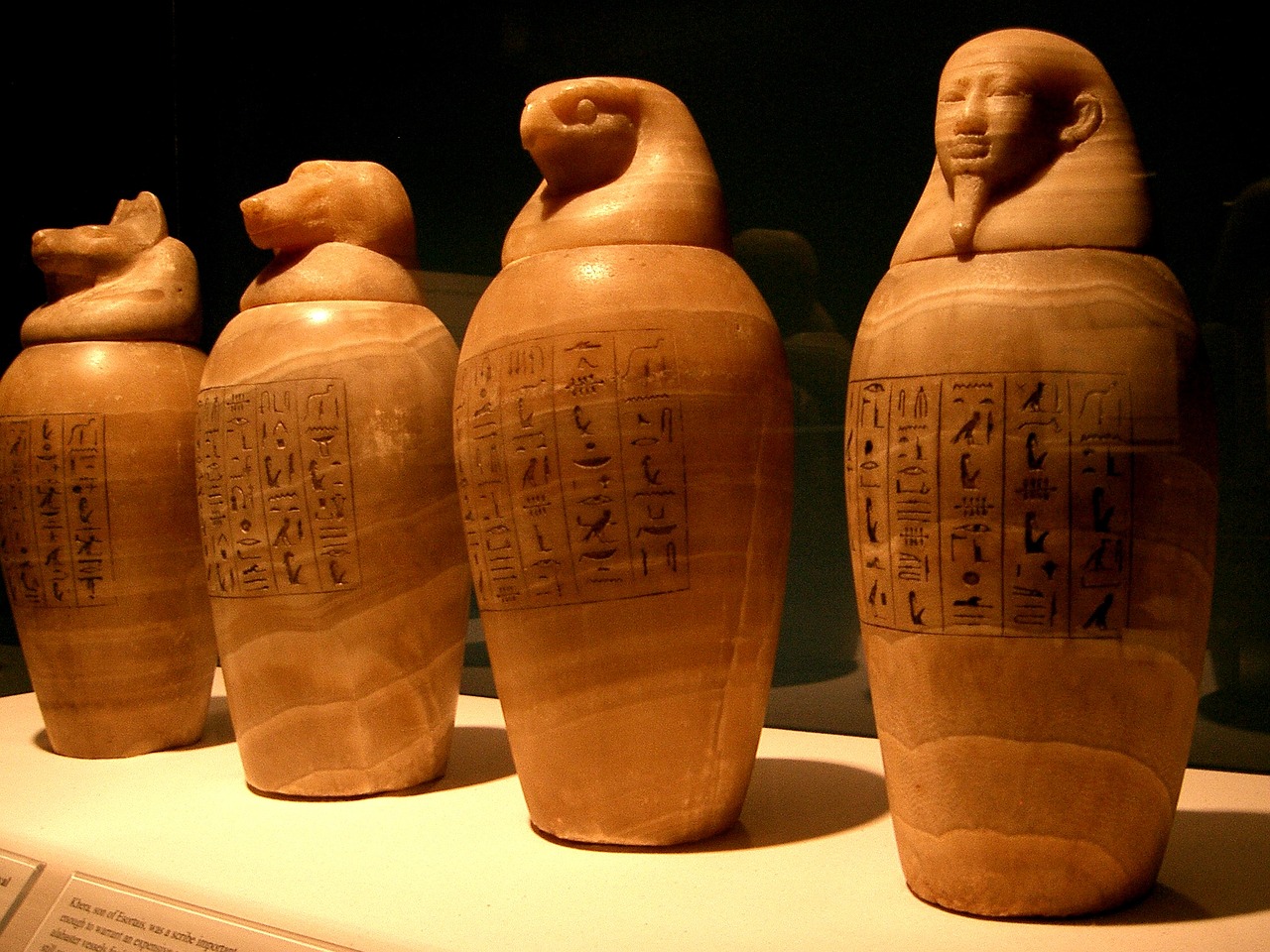Anubis, an archetypal figure in ancient Egyptian mythology, is revered as the deity of mummification and funerary ceremonies. Often depicted safeguarding tombs, he serves as a guide for souls navigating the afterlife. This ancient god, associated with lost souls and the vulnerable, has roots that can be traced back to one of Egypt’s earliest gods, Wepwawet, who also holds connections to the jackal.
The earliest representations of Anubis appear on tombs dating back to Egypt’s First Dynasty (approximately 3150-2890 BCE), indicating a significant cult following prior to this era. Anubis emerged in part due to the concern over wild animals, like dogs and jackals, disturbing newly buried bodies. To confront this threat, ancient Egyptians revered a powerful canine deity, believing it would provide the necessary protection against such creatures.
Imagery and Symbolism
Artistically, Anubis is depicted either as a black jackal-like canine or as a robust man with the head of a jackal. The black color symbolizes both the deterioration of the human body and the rejuvenating soil of the Nile, representing rebirth. As guardians of the deceased, black canines were thought to ensure that proper burial rites were observed and that the deceased could successfully navigate the afterlife.
Historically, Anubis has been referred to as the “First of the Westerners,” a title bestowed upon him during the Middle Kingdom era (2040-1782 BCE), denoting his sovereignty over the deceased. This title links him to principles of eternal justice. Even after the ascension of Osiris, Anubis retained associations with the judgment of souls, acting as a primordial figure of authority among the dead.
Additionally, Anubis was originally described in some traditions as the offspring of the sun god Ra and Goddess Hesat. However, as mythology evolved, he became recognized as the son of Osiris and Nephthys. He played a crucial role in the funerary process, portrayed in artworks where he is shown overseeing mummification or participating in the judgment of souls alongside figures like Osiris and Thoth.
A famous representation features him in a poised position, holding the golden scales on which the heart of the deceased is measured against the feather of Ma’at, symbolizing truth. His daughter, Qebhet, brings cool water to soothe souls in the Hall of Truth, highlighting Anubis’s protective nature in the afterlife.
Name and Religious Significance
The name “Anubis” emerges from the Greek adaptation of the Egyptian “Anpu” or “Inpu,” which translates to “decay,” thereby reflecting his deep-rooted association with death. He carries multiple epithets, including “Lord of the Sacred Land” and “He Who is Upon his Sacred Mountain,” signifying his central role in funerary customs across different regions.
Anubis’s role in funerary practices and his nature as a vigilant protector were essential for individuals during their transition after death. Scholar Geraldine Pinch elucidates this protective role, noting that Anubis not only guided souls through the afterlife but also monitored those who dared to disturb graves or challenge divine authority.
A notable myth recounts how Anubis apprehended the malevolent god Set, who sought the body of Osiris, branding him and using his skin as a warning—a reflection of Anubis’s substantial influence over order amid chaos.
In periods throughout ancient Egyptian history, especially during the Early Dynastic and Old Kingdom periods, Anubis was regarded as the singular Lord of the Dead. However, with the rise of the Osiris mythos, many of his attributes were ceded to Osiris, reshaping his narrative and family ties.
Continuing Legacy and Worship
Priests dedicated to Anubis were typically male, adorned in wooden masks resembling the deity during ceremonial rituals. His primary temple was located at Cynopolis, or “the city of the dog,” but shrines to him were widespread throughout Egypt, indicating his widely celebrated nature.
Even though his direct narrative may not have been as dynamic as those of other deities, his significance persisted. He transcended traditional boundaries in mythological narratives, reinforcing the beliefs surrounding respect for the deceased. Scholars maintain that he became identified with various mythological figures in other cultures, including the Greek Hermes and the Roman Charon.
Anubis, ultimately, embodies the universal human concerns surrounding death, respect for the body, and the quest for eternal peace, ensuring his lasting prominence within both ancient and modern cultural frameworks.



